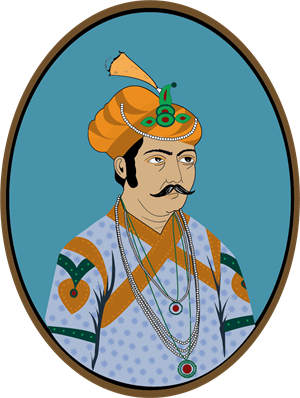
PUMPA - SMART LEARNING
எங்கள் ஆசிரியர்களுடன் 1-ஆன்-1 ஆலோசனை நேரத்தைப் பெறுங்கள். டாப்பர் ஆவதற்கு நாங்கள் பயிற்சி அளிப்போம்
Book Free DemoThe Fall of Chola rule:
The Chola empire met its downfall under the reign of Rajendra III during the second half of the \text{13th century}. The Pandyan Kingdom, which was under the Suzerainty of the Cholas, rose to power post the decline of Cholas.
The Pandian Kings were famous for their contribution to Sangam Literature. They embraced the poets and authors and conducted conclaves of poets named Sangam, which took place in Madurai – known as the capital of Tamil Literature.
Titles Of Pandyas: Cheliyan, Maaran and Valuthi were the titles used by the Pandyan rulers.
Famous Pandyan rulers like Jatavarman Sundara Pandiyan and Muthukudumi Peruvaluthi took the Pandyan Kingdom to greater heights.
The Emergence of Vijayanagar Empire in South:
The Kingdom of Vijayanagar, which means “the city of victory”, was established by the brothers, namely “Harihara and Bukka”, in 1336, where the coronation of Harihara took place. According to some historical sources, these brothers were once the feudatories of the Kakatiya empire of Warangal.
Vidyaranya: He was the Shaivaite saint who readmitted Harihara and Bukka to Hinduism as they were serving under the sultans. The new city was named Vidyanagara in honour of the spiritual guru, later known as Vijaynagara.
The brothers belong to the Sangama dynasty, and the city was established on the banks of river Tungabhadra.

The reign of Sangama was followed by the Saluva dynasty, which ruled for 20 years. The greatest ruler among the Vijayanagar empire was “Krishna Devaraya”, who belonged to the Tuluva dynasty.
Krishna Devaraya ascended the Tuluva dynasty in the year \text{1509 AD} and ruled for 20 years. He took over the reign when the political condition was highly unstable. Managing the threats, he established a dynamic dynasty that powered the empire to greater heights.
The Downfall of Vijayanagar empire:
The Vijayanagar empire faced strains post the demise of Krishna Devaraya, who was considered the ablest ruler of the dynasty.

Battle of Talikota
Sensing the situation, the Sultans of Deccan and the like-minded partners allied to topple the Vijayanagar empire, culminating in a full-blown war.
Battle Of Talikota (1565): The battle was fought between the five Deccan Sultanates and the Vijayanagar Kingdom, in which the latter was defeated. This battle is also known as the “Battle of Rakshasa Tangadi”.
The Reign of the “Great Mughals”:
Mughal rule was established under Babur, who defeated Ibrahim Lodi of the Delhi Sultanate in the First Battle of Panipat (1526).
The six rulers who took firm control of their empires and expanded their territories for 200 years came to be known as the “Great Mughals".

Akbar the Great
The Most notable among the Mughal rulers were “Akbar”, who followed a policy of religious tolerance and expanded his empire through conquests and matrimonial alliance policies.
The last mighty ruler among the Great Mughal was “Aurangzeb”, who was a ruthless and barbaric king. He expanded his empire till the Deccan region of South India, where he met his end.
The Rise of Marathas:
During Aurangzeb’s period, an alternate power centre named “Marathas” rose in the western part of India under the leadership of “Shivaji”, who proved to be one of the greatest threats to Aurangzeb and can also be considered as a reason for his end.
The Arrival of the Europeans:
The trade prospects of India were completely under the control of the Islamic Kingdoms during the 14th century, which exported spices, cotton and other valuables from the western ports of India to the lands of West Asia and the Middle East.
Irked by the dominance of Islamic rulers over the resource-rich Indian lands, the Europeans set out a plan to explore India through sea routes.

The European Sailors
The Portuguese sailors under the leadership of Vasco da Gama in 1498 set out a sail through the Cape of Good Hope and reached Calicut (in Kerala) as traders.
Establishment of Trade centres:
Using the superior naval force, the European traders from other countries followed the suit of the Portuguese.
Other European Powers, namely the Dutch, the British, the Danish, and the French, arrived in India in the order mentioned above to expand their trade and exploit the resources.
These foreign powers had a strong political agenda which they later employed and dominated the Indian lands for centuries to come.
Some of the important trade centres of the Foreign powers are given below.
Portuguese – Goa
Dutch – Pulicat and Nagapattinam
British – Chennai
Danish – Tharangambadi
French – Pondicherry